ART NEWS:Sept. 03
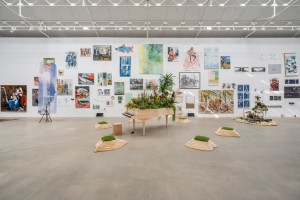 In solidarity with the artistic community in these challenging times, Galerie Thaddaeus Ropac Paris Pantin hosts the exhibition “En Être” in collaboration with the artist association, Jeune Création, in support of young and emerging artists and galleries. The gallery’s 2,000m2 exhibition space is dedicated to showcasing the work of around 120 artists selected to participate by Jeune Création to foster the promotion and sales of their work. The show will be on view from 12th to 26th of September 2020 with all sales proceeds going directly to the artists and their galleries. The exhibition is presented by Jeune Création as “a recreation ritual celebrating the joys and anguish of the world, its deaths and rebirths”. A special program will take place in the courtyard of the gallery, notably a performance ritual around the equinox of the 22/9 at 19:00. The last day of the exhibition will be celebrated with a series of performances on Saturday 26/9 from 12:00-19:00. Info: Galerie Thaddaeus Ropac, 69 Avenue du Général Leclerc, Pantin, Paris, Duration: 12-26/9/20, Days & Hours: Tue-Sat 10:00-19:00, To schedule your visit, please send an email to rsvp.pantin@ropac.net, www.ropac.net
In solidarity with the artistic community in these challenging times, Galerie Thaddaeus Ropac Paris Pantin hosts the exhibition “En Être” in collaboration with the artist association, Jeune Création, in support of young and emerging artists and galleries. The gallery’s 2,000m2 exhibition space is dedicated to showcasing the work of around 120 artists selected to participate by Jeune Création to foster the promotion and sales of their work. The show will be on view from 12th to 26th of September 2020 with all sales proceeds going directly to the artists and their galleries. The exhibition is presented by Jeune Création as “a recreation ritual celebrating the joys and anguish of the world, its deaths and rebirths”. A special program will take place in the courtyard of the gallery, notably a performance ritual around the equinox of the 22/9 at 19:00. The last day of the exhibition will be celebrated with a series of performances on Saturday 26/9 from 12:00-19:00. Info: Galerie Thaddaeus Ropac, 69 Avenue du Général Leclerc, Pantin, Paris, Duration: 12-26/9/20, Days & Hours: Tue-Sat 10:00-19:00, To schedule your visit, please send an email to rsvp.pantin@ropac.net, www.ropac.net
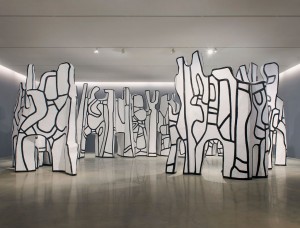 During his decade-long involvement in the “Hourloupe cycle”, Jean Dubuffet prepared models and precise specifications for architectural completion. “Le cirque”, a black and white environmental sculpture, is one of the most major works of that cycle. “Le cirque” is a habitable environment that suggests an urban plaza, which Dubuffet first conceived and sculpted in 1970 as a model for future enlargement at architectural scale. Measuring thirty feet square and thirteen feet in height, Le cirque is one of the last remaining works from the late-1960s and early-1970s to be realized at heroic size. Marking a crucial moment in Dubuffet’s deeply influential oeuvre, it stands as a major achievement in the artist’s sculptural practice and heralds the final chapter in his celebrated Hourloupe cycle, which lasted from 1962 to 1974. This cycle, the longest and most prolific of Dubuffet’s career, began with drawings and paintings, to which Dubuffet added reliefs to expand their presence spatially and “give them life” as the artist stated. Info: Pace Gallery, 540 West 25th Street, New York, Duration: 18/9-24/10/20, Days & Hours: Tue-Sat 10:00-17:00 (by advance appointment only), www.pacegallery.com
During his decade-long involvement in the “Hourloupe cycle”, Jean Dubuffet prepared models and precise specifications for architectural completion. “Le cirque”, a black and white environmental sculpture, is one of the most major works of that cycle. “Le cirque” is a habitable environment that suggests an urban plaza, which Dubuffet first conceived and sculpted in 1970 as a model for future enlargement at architectural scale. Measuring thirty feet square and thirteen feet in height, Le cirque is one of the last remaining works from the late-1960s and early-1970s to be realized at heroic size. Marking a crucial moment in Dubuffet’s deeply influential oeuvre, it stands as a major achievement in the artist’s sculptural practice and heralds the final chapter in his celebrated Hourloupe cycle, which lasted from 1962 to 1974. This cycle, the longest and most prolific of Dubuffet’s career, began with drawings and paintings, to which Dubuffet added reliefs to expand their presence spatially and “give them life” as the artist stated. Info: Pace Gallery, 540 West 25th Street, New York, Duration: 18/9-24/10/20, Days & Hours: Tue-Sat 10:00-17:00 (by advance appointment only), www.pacegallery.com
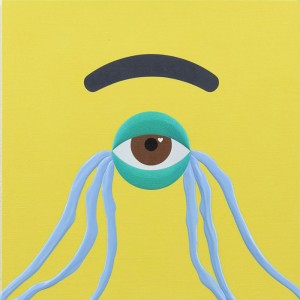 As Linda Stark’s exhibition’s title suggests, the paintings in “Hearts” frequently address varied iconographies associated with this most resonant of forms. Hearts occupy the literal and figurative centers of human and animal life, but they also appear in a wide range of social and narrative contexts. Emphasizing the physical, even sculptural, qualities of paint as much as its visual or color-based ones, Stark creates objects that reflect the multivalent potential of the heart as vessel and beacon, physical organ and mystical source. In so doing, she reveals a broad array of interests, notable for their historical depth and up-to-the-minute urgency alike. The suffragette movement and the fight for women’s right to vote; the use of hearts in medals for military purposes; the emotional power of religious imagery; and the ability of a heart to transform another image, like a watering eye, into something richly metaphorical are a few of the thematic areas Stark explores in the show. But these are also highly personal paintings that arise as responses to inner experiences of mind and body. Info: David Kordansky Gallery, 5130 W. Edgewood Pl., Los Angeles, Duration: 19/9-24/10/20, Days & Hours: Tue-Sat 10:00-18:00 (Timed reservations are here, www.davidkordanskygallery.com
As Linda Stark’s exhibition’s title suggests, the paintings in “Hearts” frequently address varied iconographies associated with this most resonant of forms. Hearts occupy the literal and figurative centers of human and animal life, but they also appear in a wide range of social and narrative contexts. Emphasizing the physical, even sculptural, qualities of paint as much as its visual or color-based ones, Stark creates objects that reflect the multivalent potential of the heart as vessel and beacon, physical organ and mystical source. In so doing, she reveals a broad array of interests, notable for their historical depth and up-to-the-minute urgency alike. The suffragette movement and the fight for women’s right to vote; the use of hearts in medals for military purposes; the emotional power of religious imagery; and the ability of a heart to transform another image, like a watering eye, into something richly metaphorical are a few of the thematic areas Stark explores in the show. But these are also highly personal paintings that arise as responses to inner experiences of mind and body. Info: David Kordansky Gallery, 5130 W. Edgewood Pl., Los Angeles, Duration: 19/9-24/10/20, Days & Hours: Tue-Sat 10:00-18:00 (Timed reservations are here, www.davidkordanskygallery.com
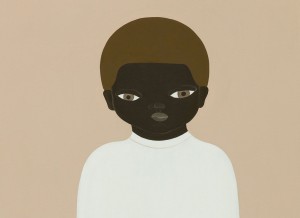 Asuka Anastacia Ogawa’s large figurative paintings depict androgynous children in chimerical dreamscapes, otherworldly scenes formed from solid fields of color and flat picture planes. Her subjects have wide thin eyes that gaze forward, piercing the fourth wall. Ogawa conjures these compositions through an exercise that embraces unmediated impulse and channels the sense of curiosity, wonder and play paramount to childhood. In one picture “Medicine girl” (2019, —under a deep red sky holding a small orange sun, a child kneels below a string of flags that hang from two posts of swirling pastels. Tinctures in small bottles flank her knees while a stream of gray pours from her pocket in a wide arc that defies gravity into the pale earth below. Although Ogawa leaves interpretation of these narratives open to her viewers, symbolically charged imagery such as these point towards mysticism, mythology, and ritual. Ogawa regards her art practice as a deeply personal conduit to a primal place inside, a spiritual channel to her Japanese and Afro-Brazilian ancestral lineage. Info: Blum & Poe Gallery, Harajuku Jingu-no-mori 5F, 1-14-34 Jingumae, Shibuya, Tokyo, Duration: 23/9-7/11/20, Days & Hours: Tue-Sat 12:00-16:00, www.blumandpoe.com
Asuka Anastacia Ogawa’s large figurative paintings depict androgynous children in chimerical dreamscapes, otherworldly scenes formed from solid fields of color and flat picture planes. Her subjects have wide thin eyes that gaze forward, piercing the fourth wall. Ogawa conjures these compositions through an exercise that embraces unmediated impulse and channels the sense of curiosity, wonder and play paramount to childhood. In one picture “Medicine girl” (2019, —under a deep red sky holding a small orange sun, a child kneels below a string of flags that hang from two posts of swirling pastels. Tinctures in small bottles flank her knees while a stream of gray pours from her pocket in a wide arc that defies gravity into the pale earth below. Although Ogawa leaves interpretation of these narratives open to her viewers, symbolically charged imagery such as these point towards mysticism, mythology, and ritual. Ogawa regards her art practice as a deeply personal conduit to a primal place inside, a spiritual channel to her Japanese and Afro-Brazilian ancestral lineage. Info: Blum & Poe Gallery, Harajuku Jingu-no-mori 5F, 1-14-34 Jingumae, Shibuya, Tokyo, Duration: 23/9-7/11/20, Days & Hours: Tue-Sat 12:00-16:00, www.blumandpoe.com
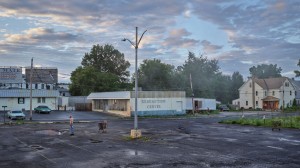 “An Eclipse of Moths” comprises sixteen large-scale panoramic exteriors, shot using Gregory Crewdson’s famously meticulous production techniques and longtime technical crew. Set in a postindustrial urban landscape, the series depicts locales of removed isolation, each of which Crewdson spent months scouting and staging before production began: a taxi depot, a traveling carnival lot, an abandoned factory complex, defunct bars and diners, and vacant storefronts. The series takes its title from an entomological term. Moths use transverse orientation to fly at a constant angle relative to a distant light source, such as the moon; exposure to artificial light confuses the insects’ internal navigation, changing their behavior and destination. Crewdson anchors his photographic figures in relation to a source of light: a street lamp or traffic light, or the hesitant, transitional illumination of twilight. In each image, the viewer is positioned above in a semi bird’s-eye vantage point. Info: Gagosian Gallery, 456 North Camden Drive, Beverly Hills, Duration: 24/9-21/11/20, Days & Hours: Mon-Sat 10:00-18:00, https://gagosian.com
“An Eclipse of Moths” comprises sixteen large-scale panoramic exteriors, shot using Gregory Crewdson’s famously meticulous production techniques and longtime technical crew. Set in a postindustrial urban landscape, the series depicts locales of removed isolation, each of which Crewdson spent months scouting and staging before production began: a taxi depot, a traveling carnival lot, an abandoned factory complex, defunct bars and diners, and vacant storefronts. The series takes its title from an entomological term. Moths use transverse orientation to fly at a constant angle relative to a distant light source, such as the moon; exposure to artificial light confuses the insects’ internal navigation, changing their behavior and destination. Crewdson anchors his photographic figures in relation to a source of light: a street lamp or traffic light, or the hesitant, transitional illumination of twilight. In each image, the viewer is positioned above in a semi bird’s-eye vantage point. Info: Gagosian Gallery, 456 North Camden Drive, Beverly Hills, Duration: 24/9-21/11/20, Days & Hours: Mon-Sat 10:00-18:00, https://gagosian.com
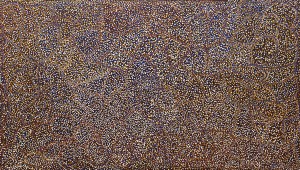 The exhibition “Desert Painters of Australia: Two Generations” is the first-ever exhibition in Hong Kong dedicated to work by contemporary Indigenous Australian artists. Indigenous Australians constitute the longest surviving civilization in human history for more than 60,000 years. While affinities may be perceived between remote Indigenous Australian art and other modern art forms, the individual practices that are developed in relative isolation stem from the oldest continuous art traditions in the world. This exhibition is designed to introduce the local audience for the first time to rare works by some of Australia’s most renowned Indigenous artists from remote regions of the continent. After the forced displacement of the Pintupi, Luritja, Warlpiri, and Anmattyerr people to the Papunya settlement in the Northern Territory from the 1950s, tribal members began collaborating on site-specific paintings. Deriving from ancient rituals of body decoration, sand drawing, wood carving, and ceremony, these collective expressions eventually evolved into autonomous works on canvas by individual artists. Info: Gagosian Gallery, 7/F Pedder Building, 12 Pedder Street, Central, Hong Kong, Duration: 24/9-7/11/20, Days & Hours: Tue-Sat 11:00-19:00, https://gagosian.com
The exhibition “Desert Painters of Australia: Two Generations” is the first-ever exhibition in Hong Kong dedicated to work by contemporary Indigenous Australian artists. Indigenous Australians constitute the longest surviving civilization in human history for more than 60,000 years. While affinities may be perceived between remote Indigenous Australian art and other modern art forms, the individual practices that are developed in relative isolation stem from the oldest continuous art traditions in the world. This exhibition is designed to introduce the local audience for the first time to rare works by some of Australia’s most renowned Indigenous artists from remote regions of the continent. After the forced displacement of the Pintupi, Luritja, Warlpiri, and Anmattyerr people to the Papunya settlement in the Northern Territory from the 1950s, tribal members began collaborating on site-specific paintings. Deriving from ancient rituals of body decoration, sand drawing, wood carving, and ceremony, these collective expressions eventually evolved into autonomous works on canvas by individual artists. Info: Gagosian Gallery, 7/F Pedder Building, 12 Pedder Street, Central, Hong Kong, Duration: 24/9-7/11/20, Days & Hours: Tue-Sat 11:00-19:00, https://gagosian.com
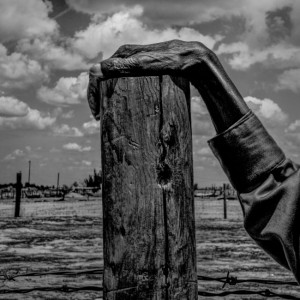 According to the U.S. Census Bureau, 12.7% of Americans, or 40 million people, live in poverty. To Matt Black, poverty is not really a question of economics but rather a lived experience of power. But how do you make visible something ingrained in the very fabric of our society? Matt Black is from California’s Central Valley, an agricultural region in the heart of the state. His work has explored the connections between migration, poverty, agriculture, and the environment in his native rural California and in southern Mexico. He has traveled over 100,000 miles across 46 U.S. states for his project “The Geography of Poverty”. Other recent works include “The Dry Land”, about the impact of drought on California’s agricultural communities, and “The Monster in the Mountains”, about the disappearance of 43 students in the southern Mexican state of Guerrero. For the past four years, Matt Black has wondered about an alternate title for his documentary project “The Geography of Poverty”. Info: Deichtorhallen Hamburg, House of Photography, Deichtorplatz 1, Hamburg, Duration: 25/9/20-3/1/21, Days & Hours: Tue-Sun 11:00-18:00, www.deichtorhallen.de
According to the U.S. Census Bureau, 12.7% of Americans, or 40 million people, live in poverty. To Matt Black, poverty is not really a question of economics but rather a lived experience of power. But how do you make visible something ingrained in the very fabric of our society? Matt Black is from California’s Central Valley, an agricultural region in the heart of the state. His work has explored the connections between migration, poverty, agriculture, and the environment in his native rural California and in southern Mexico. He has traveled over 100,000 miles across 46 U.S. states for his project “The Geography of Poverty”. Other recent works include “The Dry Land”, about the impact of drought on California’s agricultural communities, and “The Monster in the Mountains”, about the disappearance of 43 students in the southern Mexican state of Guerrero. For the past four years, Matt Black has wondered about an alternate title for his documentary project “The Geography of Poverty”. Info: Deichtorhallen Hamburg, House of Photography, Deichtorplatz 1, Hamburg, Duration: 25/9/20-3/1/21, Days & Hours: Tue-Sun 11:00-18:00, www.deichtorhallen.de
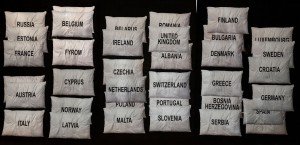 “Theorimata” the exhibition / institution by AICA Hellas, the Greek Section of the International Association of Art Critics, is presented for the second time at the National Museum of Contemporary ArtAthens(EMST). The first exhibition was presented in 2018 with the aim to become a biennial. For the exhibition “Theorimata 2: On History”, 25 curators, scholars and art critics, members of the Greek Section of AICA, propose 56 artists who, with History as their axis, promote the function of art as an alternative educational tool and a means of dynamically intervening in the social fabric. The idea that the knowledge of the past is an aid to the interpretation of the present and a guide to the future, asserted by Thucydides in his first book on the History of the Peloponnesian War, runs through the exhibition in which installations, constructions, sculptures, photographs, paintings, artists’ books, drawings, videos and happenings are presented. Info: National Museum of Contemporary Art (EMST), Kallirrois Avenue & Amvr. Frantzi Str, former Fix factory Athens, Duration: 26/9-1/11/20, Days & Hours: Tue-Sun 11;00-19:00, www.emst.gr
“Theorimata” the exhibition / institution by AICA Hellas, the Greek Section of the International Association of Art Critics, is presented for the second time at the National Museum of Contemporary ArtAthens(EMST). The first exhibition was presented in 2018 with the aim to become a biennial. For the exhibition “Theorimata 2: On History”, 25 curators, scholars and art critics, members of the Greek Section of AICA, propose 56 artists who, with History as their axis, promote the function of art as an alternative educational tool and a means of dynamically intervening in the social fabric. The idea that the knowledge of the past is an aid to the interpretation of the present and a guide to the future, asserted by Thucydides in his first book on the History of the Peloponnesian War, runs through the exhibition in which installations, constructions, sculptures, photographs, paintings, artists’ books, drawings, videos and happenings are presented. Info: National Museum of Contemporary Art (EMST), Kallirrois Avenue & Amvr. Frantzi Str, former Fix factory Athens, Duration: 26/9-1/11/20, Days & Hours: Tue-Sun 11;00-19:00, www.emst.gr
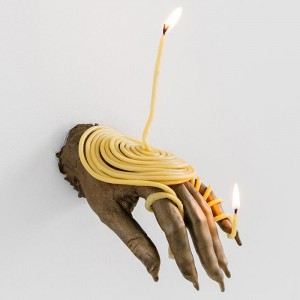 “Possédé·e·s” is a multidisciplinary exhibition that brings together over 25 international artists. It explores the relationship between resistant or excluded bodies and esoterisms: a means to reappropriate and perform feminist, queer or decolonial identities. Necromancy and spiritism, divination (astrology, fortune-telling, palmistry), magic and alchemy (spells, potions, elixirs) are among those gestures and rituals whose force springs forth from a body in movement. The occult only acquires meaning through performance. It is banished bodies that seize hold of such acts. The occult is the science of deviant bodies. It is necessary to be excluded and, in return, to exclude oneself from social, religious or economic norms in order to become a witch or a voodoo priest, to converse with spirits and let oneself be carried away by them. In this sense, the occult sets itself up as resistance against dogma, patriarchy, dominant powers, religions, accepted knowledge systems: in other words, the majority. By its nature, it is that which is hidden and other. It is that which reveals. Info: Contemporain Montpellier (MOCO), 14 rue de l’École de Pharmacie, Montpellier, Duration: 26/9/20-3/1/21, Days & Hours: Wed-Sun 12:00-19:00, www.moco.art
“Possédé·e·s” is a multidisciplinary exhibition that brings together over 25 international artists. It explores the relationship between resistant or excluded bodies and esoterisms: a means to reappropriate and perform feminist, queer or decolonial identities. Necromancy and spiritism, divination (astrology, fortune-telling, palmistry), magic and alchemy (spells, potions, elixirs) are among those gestures and rituals whose force springs forth from a body in movement. The occult only acquires meaning through performance. It is banished bodies that seize hold of such acts. The occult is the science of deviant bodies. It is necessary to be excluded and, in return, to exclude oneself from social, religious or economic norms in order to become a witch or a voodoo priest, to converse with spirits and let oneself be carried away by them. In this sense, the occult sets itself up as resistance against dogma, patriarchy, dominant powers, religions, accepted knowledge systems: in other words, the majority. By its nature, it is that which is hidden and other. It is that which reveals. Info: Contemporain Montpellier (MOCO), 14 rue de l’École de Pharmacie, Montpellier, Duration: 26/9/20-3/1/21, Days & Hours: Wed-Sun 12:00-19:00, www.moco.art
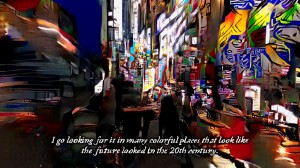 The exhibition “Hito Steyerl. I Will Survive” at K21 is the first comprehensive overview of the work of the artist, filmmaker, and author to be presented in a German museum. Steyerl is currently one of the most important positions internationally when it comes to reflecting on the social roles of art and museums, experimenting with media forms of presentation and critically examining the use of artificial intelligence. At the center of the presentation at K21 is a new multimedia installation developed especially for the exhibition, with which Steyerl critically explores the potentials of digitality, simulation, and artificial intelligence with regard to artistic creativity, modes of museum presentation, social upheavals, and pandemic conditions. The new work will be shown together with a comprehensive selection of earlier works by Steyerl. In addition to large-scale installations from the past ten years the focus is on early films made shortly after Steyerl completed her studies in Documentary Film Direction. Info: Curators: Doris Krystof, Florian Ebner and Marcella Lista, Kunstsammlung Nordrhein-Westfalen, Grabbeplatz 5 + Ständehausstr. 1, Düsseldorf, Duration: 26/9/20-10/1/20, Days & Hours: Tue-Fri 10:00-18:00, Sat-Sun 11:00-18:00, www.kunstsammlung.de
The exhibition “Hito Steyerl. I Will Survive” at K21 is the first comprehensive overview of the work of the artist, filmmaker, and author to be presented in a German museum. Steyerl is currently one of the most important positions internationally when it comes to reflecting on the social roles of art and museums, experimenting with media forms of presentation and critically examining the use of artificial intelligence. At the center of the presentation at K21 is a new multimedia installation developed especially for the exhibition, with which Steyerl critically explores the potentials of digitality, simulation, and artificial intelligence with regard to artistic creativity, modes of museum presentation, social upheavals, and pandemic conditions. The new work will be shown together with a comprehensive selection of earlier works by Steyerl. In addition to large-scale installations from the past ten years the focus is on early films made shortly after Steyerl completed her studies in Documentary Film Direction. Info: Curators: Doris Krystof, Florian Ebner and Marcella Lista, Kunstsammlung Nordrhein-Westfalen, Grabbeplatz 5 + Ständehausstr. 1, Düsseldorf, Duration: 26/9/20-10/1/20, Days & Hours: Tue-Fri 10:00-18:00, Sat-Sun 11:00-18:00, www.kunstsammlung.de
